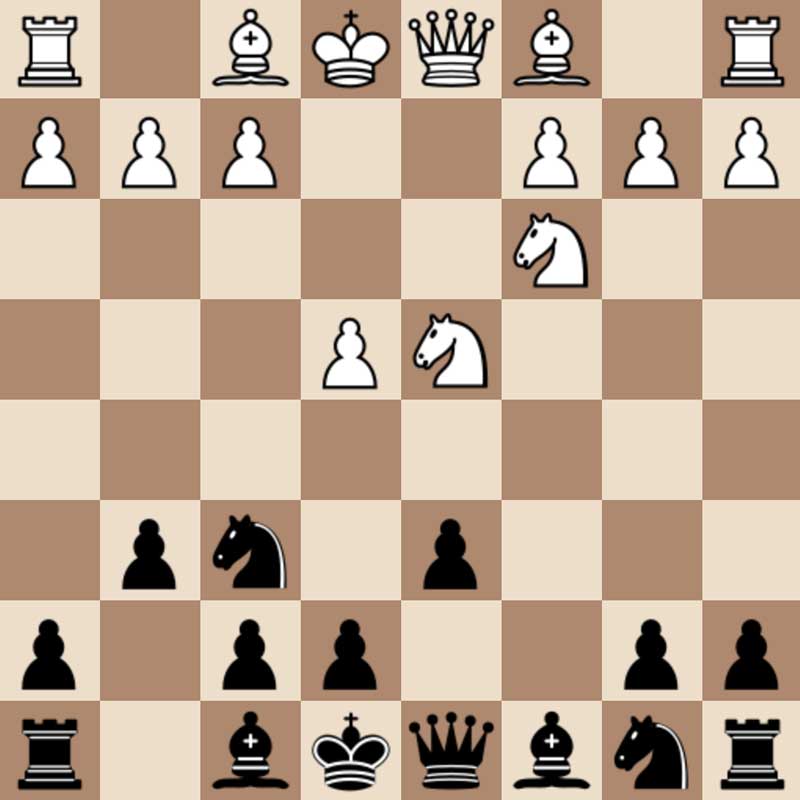The Sicilian Dragon is one of the most aggressive openings in the Sicilian Defense. We have talked about this in a previous article. Here we would like to go deep into this opening variation to give a better idea.
It’s Razor-Sharp
In the Dragon, around 80-90% of the lines are aggressive. This often means that one little slip could cost very dearly for either side. So if you are a naturally attacking player, you’d love this variation. On the other hand, if you prefer to play out strategic battles with long-term plans, this may not be the opening you’d want to try with the Black pieces.
Computer Preparation
Anything that is super sharp means it will be analyzed by the strong chess engines.
The one who is better prepared often gets a big advantage. We have frequently seen games where weaker oppositions were able to destroy stronger ones, thanks to their in-depth opening preparation.
Why did this happen? Because the stronger players were fighting with the computer, not against the strength of the weaker players.
So if you are someone who isn’t ready to spend time developing a repertoire with the Black pieces to play the Dragon, stay away from it. White has a few better options compared to Black. They are discussed below.
White Has Different Options To Choose From
Because the White side gets to make the first move, they often have a flexible choice that they can choose from.
First of all, White can simply avoid the Dragon by not playing 1.e4. This may sound ridiculous. But often at the top level, White players play other lines against the Dragon specialists.
Second, White also has calmer options – Anti-Sicilians, Closed Sicilians, Alapin Variation, Grand Prix attack or the Moscow variation with 3.Bb5+.
Third, even if White chooses the Dragon, they don’t always need to opt for the mainline with 6.Be3 where things get hot. They can employ the typical quiet lines starting with 6.Be2.
In that, White wants to finish their development peacefully, before taking any concrete option. On the other hand, Black achieves a comfortable position in it.
But Black doesn’t have this flexibility of options. They have to be prepared to face sharp, slow or boring lines. White decides how the play will develop.
Don’t Hesitate To Sacrifice Pawns
In the mainline of Dragon, both the sides launch their own pawn storms.
White starts playing on the kingside with h4, g4 and h5. Sometimes, if Black themselves play …h5 first – White plays g4, sacrificing their pawn and after Black’s …hxg4, White advances h5 with the idea to open the h-file for their rook with hxg6.
This is a common motif and in a lot of cases White won’t care about sacrificing material to activate pieces.
Black also does the same. They often launch an attack with the direct …b5, instead of preparing the advance with …a6. If White captures their b-pawn, Black will place their rook on b8, Queen to a5 and bring another rook to c8. This way, they can launch a mating attack against the White king.
Both sides don’t hesitate to sacrifice pawns. This is because the king’s are castled on the opposite flank of the board, where every single tempo matters. As a result, time and initiative is valued on a premium, instead of material.
Black’s G7-Bishop Is The Key To Their Offense And Defense
The fianchettoed dark squared Bg7 holds the key to success for Black. It does an amazing job of defending it king on g8 along the h-file by covering the crucial h6 and h8 square.
Because of this, White often tries to exchange the g7-bishop with Bh6, to which Black avoids the trade in most cases. Sometimes this also means sacrificing their rook on f8 for White’s dark squared bishop.
On the other hand, the bishop also eyes the dangerous a1-h8 diagonal, where the White king hides. Black tries to make the best use of this by sacrificing an exchange with …Rxc3(a very common theme in the Dragon) and weakening White’s queenside dark squares in the process.
A lot of times, this leads to a mating attack with the Bg7 playing a supporting role.
To counter this, White is often willing to trade the dark squared bishop with Bh6 and Bxg7 as soon as they can.
The endgame offers good fighting chances for Black
Thanks to the fianchetto setup, a compact and fluid pawn structure, an open c-file and an opportunity to launch a queenside majority attack, Black gets a fighting endgame.
This often allows the Black player to squeeze victory in the final part of the game.
This doesn’t mean that all endgames are bad for White. A lot of them are equal, but in those cases, it’s easier to play with the Black pieces in a practical game.
These points are what every player must know before they start playing or facing the Sicilian Dragon. It’s a perfectly playable opening which doesn’t have any direct refutation. For dynamic players who love attacking chess, this is a good weapon to rely on.


